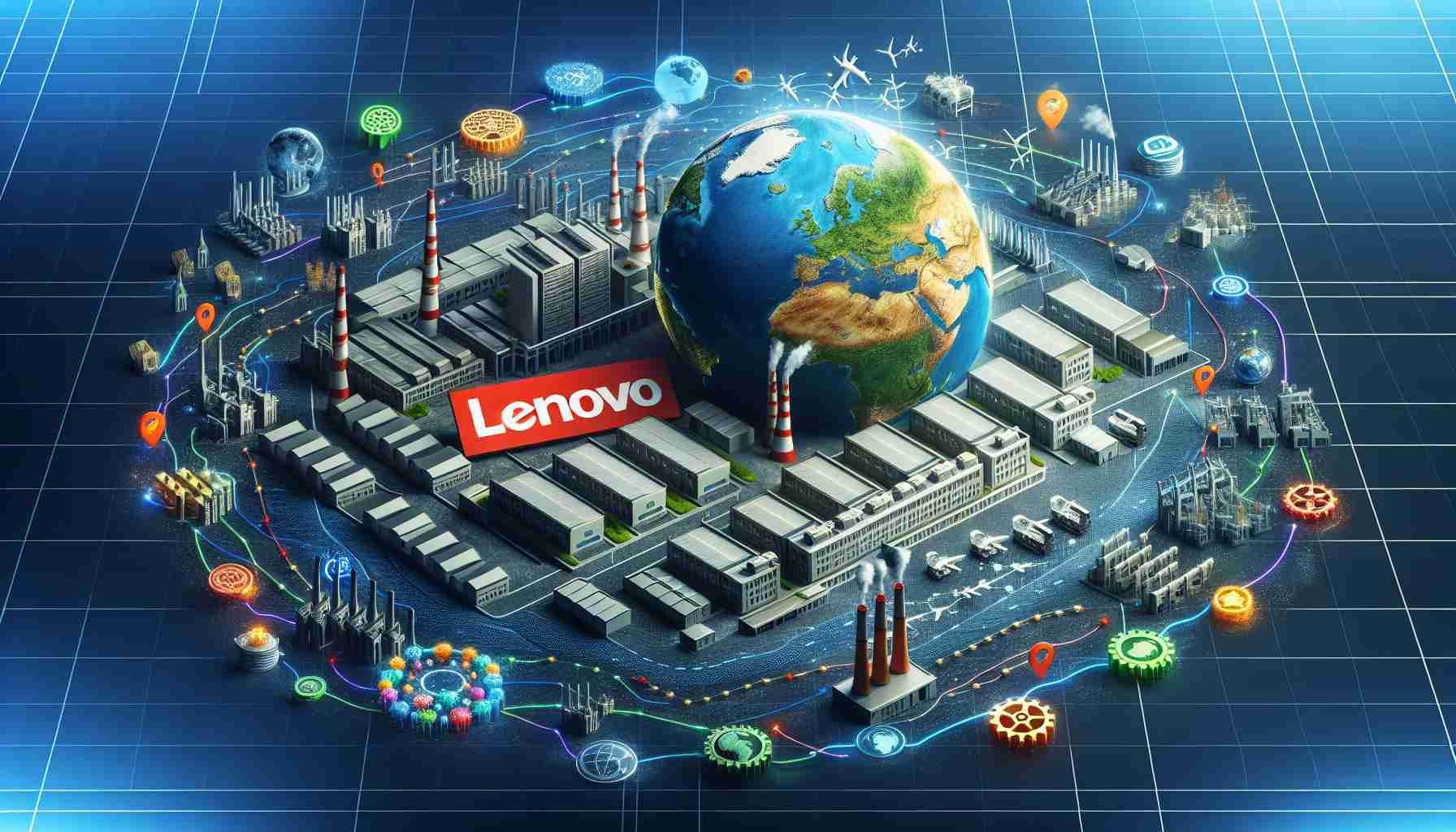Lenovo, the tech giant renowned as the world’s leading PC maker, is planning a strategic expansion beyond China. With geopolitical tensions rising globally, Lenovo is set to diversify its supply chain by establishing more manufacturing facilities outside its primary base in China. This diversification aims to mitigate risks associated with possible high tariffs on Chinese imports, especially with the uncertainty tied to U.S. trade policies.
While Lenovo’s manufacturing is primarily located in China, it already boasts over 30 facilities across nine international markets. As part of its expansion strategy, Lenovo is considering setting up factories in Saudi Arabia following a substantial investment from the kingdom’s Public Investment Fund.
Recent financial results highlight Lenovo’s robust growth trajectory. Reporting a 24% increase in fiscal second-quarter revenue, the company reached US$17.9 billion, significantly outperforming market expectations. This growth is partly attributed to a surge in demand for PCs equipped with artificial intelligence capabilities, underscoring a promising recovery in the personal computer market.
Lenovo’s strategic focus on AI technology is evident as it continues to roll out AI-powered PCs globally, projecting that such systems will constitute 25% of its shipments by 2025, potentially reaching up to 80% by 2027. The company is also enhancing its AI server and software ventures, with Infrastructure Solutions Group revenues surging over 60%, thanks to high demand for AI data center servers.
With these strategic initiatives, Lenovo is well-positioned to capitalize on emerging trends in technology while ensuring resilience against geopolitical uncertainties.
Is Lenovo’s Global Ambition a Game-Changer in the Tech Industry?
As Lenovo, arguably the world’s foremost PC manufacturer, seeks to expand beyond its Chinese heartland, the implications are profound for people, communities, and nations globally. This endeavor, fueled by geopolitical tensions and evolving trade policies, could significantly alter the landscape of global supply chains and technology consumption.
Impacts on Local Economies and Communities
Lenovo’s diversification strategy is more than just a corporate maneuver; it’s a development that holds substantial significance for local economies everywhere. For instance, establishing new manufacturing facilities in places like Saudi Arabia could bolster local jobs, foster technological skills, and spawn economic growth. Communities stand to benefit from job creation and knowledge transfer, as they often do when a tech giant like Lenovo sets up operations because these initiatives typically involve training programs and partnerships with local educational institutions.
Interesting Facts and Controversies
– Lenovo’s International Presence: Meanwhile, Lenovo’s already existing 30 manufacturing facilities spread over nine international markets signify the company’s pledge to reduce geopolitical risk and enhance reliability. Each international base often signals a commitment toward local market adaptation, which may include customized product offerings and services.
– AI as a Strategic Focus: Lenovo’s integration of AI into PCs is not merely a strategy; it’s an evolution in technology. AI-powered systems optimize performance for users, offering smarter functions that align with modern needs. However, this raises pertinent questions about data privacy and the ethical use of AI—topics that continue to generate global debate.
Advantages and Disadvantages of Lenovo’s Strategy
– Advantages:
– Supply Chain Resilience: By expanding its manufacturing footprint, Lenovo builds resilience against potential tariffs and geopolitical disruptions.
– Market Presence & Growth: Diversified production bases can lead to a strengthened presence in multiple regional markets, facilitating growth.
– Disadvantages:
– Complex Logistics: Managing an extensive network of international facilities is no small feat and can complicate logistics and operations.
– Investment Costs: Initial investments for setting up new manufacturing facilities are substantial and could strain financial resources, especially if predictions about market growth don’t materialize.
Questions and Answers
– How Does Lenovo’s Expansion Affect Trade Policies?
– As Lenovo diversifies its supply chains, it may prompt other companies to reassess their supply chain strategies, possibly influencing global trade policies to accommodate such shifts. Countries may introduce measures to attract further tech investments.
– What Are the Risks if This Strategy Doesn’t Pay Off?
– If Lenovo’s strategy fails to meet expectations, it may lead to financial losses and reduced investor confidence. Moreover, the local economies that had banked on jobs and growth may face setbacks, creating broader societal implications.
For more insights on global technology trends and business strategic moves, check out TechCrunch and Bloomberg for comprehensive news coverage.
In conclusion, Lenovo’s strategic push heralds both opportunities and challenges. By navigating these waters, the company not only seeks to secure its market position but also sets a precedent for how tech giants might adapt to changing geopolitical landscapes. As these developments unfold, their ripple effects are sure to be felt worldwide.


























